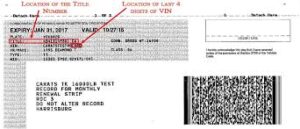Forex swing trading is a trading strategy that seeks to capitalize on short to medium-term price movements in the foreign exchange market. Swing traders typically hold positions for several days to weeks, aiming to profit from price “swings” or fluctuations that occur within a trend. This approach requires a balance between the speed of execution found in day trading and the longer-term perspective of trend trading. Swing traders analyze market trends and use technical indicators to identify potential entry and exit points, attempting to capture the middle portion of a price move.
The key to swing trading is to identify market trends and patterns that indicate potential reversals or continuation of price movements. Swing traders often use a combination of technical analysis tools, such as moving averages, trend lines, and oscillators, to make informed decisions. By focusing on these short to medium-term trends, swing traders aim to achieve substantial profits without the need for constant monitoring that day trading requires.
How Does Forex Swing Trading Differ from Day Trading?
The primary difference between forex swing trading and day trading lies in the time horizon and trading frequency. Day trading involves making multiple trades within a single day, with positions opened and closed before the market closes. Day traders seek to profit from very short-term price movements and typically avoid holding positions overnight to reduce exposure to market risks. This approach requires constant monitoring of the market and quick decision-making, with a focus on high liquidity and low spreads.
In contrast, swing trading involves holding positions for several days to weeks, aiming to benefit from longer-term price movements and trends. Swing traders are less concerned with intraday price fluctuations and more focused on capturing medium-term trends. While day trading requires a rapid response to market conditions, swing trading allows for more analysis and less frequent trading. This can be less stressful for traders who prefer not to be glued to their screens throughout the trading day.
What are the Key Indicators Used in Forex Swing Trading?
In forex swing trading, several key indicators are commonly used to identify potential trade opportunities and confirm trends. One of the most popular indicators is the Moving Average (MA), which smooths out price data to identify the direction of the trend. Swing traders often use combinations of short-term and long-term moving averages to generate buy or sell signals based on crossovers and trend confirmations.
Another important tool is the Relative Strength Index (RSI), a momentum oscillator that measures the speed and change of price movements. The RSI helps traders identify overbought or oversold conditions, providing insights into potential reversals or trend continuations. Additionally, swing traders often use Fibonacci retracement levels to identify potential support and resistance levels based on the Fibonacci sequence. These indicators, when used in combination, help swing traders make informed decisions and optimize their trading strategies.
Which Currency Pairs are Best for Swing Trading in Forex?
When swing trading in the forex market, certain currency pairs are preferred due to their liquidity, volatility, and trend characteristics. Major pairs like EUR/USD, GBP/USD, and USD/JPY are often favored because they are highly liquid, meaning they have large trading volumes and tight spreads. This liquidity ensures that traders can enter and exit positions with minimal slippage. Additionally, these pairs tend to have clear trends and substantial price movements, which are ideal for capturing swings.
Cross currency pairs, such as EUR/GBP or AUD/JPY, can also be effective for swing trading. They often exhibit strong trends and offer diversification beyond the major pairs. However, these pairs may have wider spreads and lower liquidity compared to the majors, so traders should be cautious and ensure that they are comfortable with the associated risks. Ultimately, the best currency pairs for swing trading are those that align with the trader’s strategy, risk tolerance, and market analysis.
What Time Frames are Most Effective for Forex Swing Trading?
For forex swing trading, the most effective time frames typically range from the 4-hour (H4) to the daily (D1) charts. The 4-hour chart provides a balance between short-term movements and medium-term trends, making it a popular choice for identifying potential swing trade opportunities. It offers a clear view of price swings and trend changes within a more manageable time frame compared to intraday charts.
The daily chart, on the other hand, offers a broader perspective on longer-term trends and price action. It helps traders identify significant support and resistance levels and overall market sentiment. Swing traders often use the daily chart to confirm signals from shorter time frames and to assess the broader market context. Combining multiple time frames allows traders to refine their strategies and make more informed decisions.
How to Identify Entry and Exit Points in Forex Swing Trading?
Identifying entry and exit points in forex swing trading involves analyzing technical indicators and price patterns to determine optimal trade opportunities. Entry points are typically identified using a combination of trend analysis and technical signals. For instance, a common strategy is to enter a trade when a shorter-term moving average crosses above a longer-term moving average, signaling a potential uptrend. Additionally, price patterns such as double bottoms or head-and-shoulders formations can indicate reversal points.
Exit points are determined by setting target levels and stop-loss orders to manage risk and lock in profits. Traders often use key technical levels, such as support and resistance, to set their target prices. For example, an exit strategy might involve closing a position when the price reaches a pre-determined resistance level or when a trend reversal signal appears. Stop-loss orders help protect against adverse price movements by automatically closing a position if the market moves against the trader’s position. Effective exit strategies combine technical analysis with risk management to optimize trade outcomes.
What Risk Management Strategies are Essential for Forex Swing Trading?
Risk management is crucial in forex swing trading to protect capital and maintain consistent profitability. One of the most important strategies is setting a stop-loss order for every trade. This order automatically closes a position when the price reaches a specified level, limiting potential losses. Traders should determine their stop-loss levels based on technical analysis and ensure they are within their risk tolerance.
Another essential risk management strategy is position sizing, which involves adjusting the size of each trade relative to the trader’s account balance and risk tolerance. A common guideline is to risk no more than 1-2% of the trading account on any single trade. This helps to mitigate the impact of losing trades on overall capital. Additionally, employing a risk-reward ratio, such as aiming for a reward that is at least twice the risk taken, can help ensure that profitable trades outweigh losses.
How to Use Technical Analysis in Forex Swing Trading?
Technical analysis is a cornerstone of forex swing trading, as it helps traders identify trends, potential reversals, and optimal entry and exit points. Key tools in technical analysis include trend lines, moving averages, and oscillators. Trend lines help traders visualize the direction of price movements and identify potential support and resistance levels. Moving averages smooth out price data to reveal the underlying trend and potential trend changes.
Oscillators, such as the Relative Strength Index (RSI) and the Stochastic Oscillator, are used to gauge the momentum of a price move and identify overbought or oversold conditions. For instance, an RSI reading above 70 might indicate an overbought condition, suggesting a potential reversal or correction. Combining these tools with chart patterns, like head-and-shoulders or triangles, enhances the ability to make informed trading decisions and identify profitable opportunities.
What are the Best Forex Swing Trading Strategies for Beginners?
For beginners in forex swing trading, starting with simple and effective strategies can provide a solid foundation. One popular approach is the Moving Average Crossover strategy. This involves using two moving averages: a shorter-term moving average and a longer-term moving average. A buy signal occurs when the shorter-term average crosses above the longer-term average, while a sell signal happens when the opposite crossover occurs. This strategy helps identify trend changes and potential trade opportunities.
Another effective strategy is the support and resistance trading approach. This involves identifying key support and resistance levels on the chart and placing trades based on price action around these levels. For example, buying near support levels and selling near resistance levels can align trades with the prevailing market trend. Additionally, combining these strategies with sound risk management practices, such as setting stop-loss orders and proper position sizing, can enhance trading success and help beginners build confidence in their trading decisions.
How to Backtest a Forex Swing Trading Strategy?
Backtesting a forex swing trading strategy involves evaluating its performance using historical market data to determine its potential effectiveness. The process begins with defining the strategy’s rules, including entry and exit signals, risk management, and position sizing. Once these rules are established, historical data for the currency pairs you plan to trade is collected.
Next, you apply the strategy to the historical data, simulating trades as if they were executed in real time. This can be done manually by reviewing past charts and applying the strategy’s criteria or through automated backtesting tools provided by trading platforms. Key metrics to evaluate include the strategy’s win rate, profit-to-loss ratio, and maximum drawdown. Analyzing these metrics helps to assess whether the strategy is viable and to identify areas for improvement before applying it in live trading.
What Tools and Platforms are Ideal for Forex Swing Trading?
For effective forex swing trading, several tools and platforms can enhance your trading experience. Popular trading platforms include MetaTrader 4 (MT4) and MetaTrader 5 (MT5). These platforms offer comprehensive charting tools, technical indicators, and automated trading capabilities, making them ideal for swing traders who need to analyze and execute trades efficiently.
In addition to trading platforms, charting software such as TradingView provides advanced charting capabilities and social features that allow traders to share insights and strategies. For backtesting and strategy development, platforms like Forex Tester and AmiBroker offer specialized tools to simulate trading strategies with historical data. Combining these tools with robust risk management and analytical resources helps traders make informed decisions and optimize their swing trading strategies.
How Can You Optimize Profit Targets in Forex Swing Trading?
Optimizing profit targets in forex swing trading involves setting realistic and achievable goals based on technical analysis and market conditions. One effective approach is to use technical indicators to determine potential profit targets. For example, traders can use Fibonacci retracement levels or previous support and resistance levels to set target prices where price movements are likely to stall or reverse.
Additionally, employing a risk-reward ratio helps in optimizing profit targets. A common practice is to aim for a reward that is at least twice the amount of risk taken on a trade. For instance, if your stop-loss is set at 50 pips, you might set your profit target at 100 pips. This ensures that winning trades significantly outweigh losing trades, improving overall profitability. Regularly reviewing and adjusting profit targets based on changing market conditions and strategy performance can further enhance trading outcomes.
What are the Common Mistakes to Avoid in Forex Swing Trading?
In forex swing trading, avoiding common mistakes can significantly impact trading success. One frequent mistake is overleveraging, which can amplify both profits and losses. Traders might be tempted to use excessive leverage to maximize returns, but this can also lead to substantial losses if the market moves against their positions. Managing leverage carefully and only using it within one’s risk tolerance is crucial.
Another common error is ignoring risk management. Failing to set stop-loss orders or not adhering to predefined risk limits can result in uncontrolled losses. Proper risk management includes setting stop-loss orders, defining position sizes, and using a risk-reward ratio to balance potential gains with potential losses. Additionally, overtrading or making impulsive decisions based on emotions rather than analysis can undermine a trading strategy’s effectiveness. Maintaining discipline and sticking to a well-defined trading plan helps mitigate these risks.
How to Adapt to Market Changes in Forex Swing Trading?
Adapting to market changes is essential for success in forex swing trading. One effective method is to regularly review and update your trading strategy based on current market conditions. This involves analyzing changes in volatility, trends, and economic events that could impact the forex market. Keeping abreast of news and geopolitical developments can help anticipate market shifts and adjust trading decisions accordingly.
Using multiple time frames for analysis can also aid in adapting to market changes. By examining shorter time frames in conjunction with longer-term charts, traders can get a clearer picture of the market’s current state and potential future movements. Additionally, incorporating dynamic risk management techniques, such as adjusting stop-loss levels and profit targets based on market conditions, ensures that your strategy remains relevant and responsive to changing market dynamics.
What is the Role of Fundamental Analysis in Forex Swing Trading?
Fundamental analysis plays a crucial role in forex swing trading by providing insights into the underlying economic factors that influence currency prices. This analysis involves examining economic indicators, such as interest rates, inflation, employment data, and GDP growth, to understand their impact on currency values. For swing traders, fundamental analysis helps in identifying the broader economic trends and potential catalysts for currency movements.
While technical analysis is often used for timing trades, fundamental analysis offers context and a broader perspective on market trends. For instance, if a country’s central bank is expected to raise interest rates, its currency might strengthen relative to others. Swing traders use this information to align their trades with the expected direction of the market based on economic fundamentals. Combining fundamental analysis with technical analysis can lead to more informed and strategic trading decisions.
How Does Market Sentiment Impact Forex Swing Trading?
Market sentiment refers to the overall mood or attitude of traders and investors towards a particular currency or the forex market as a whole. It is influenced by factors such as economic news, geopolitical events, and market rumors. For forex swing trading, understanding market sentiment can provide insights into potential price movements and trends. Positive sentiment towards a currency often leads to its appreciation, while negative sentiment can cause depreciation.
Swing traders monitor market sentiment through various tools, including news feeds, sentiment indices, and social media analysis. For example, if market sentiment is strongly bullish towards the USD due to positive economic data, traders might expect the USD to strengthen against other currencies. Conversely, if sentiment turns bearish due to geopolitical tensions, the currency might weaken. Incorporating sentiment analysis helps traders anticipate market shifts and adjust their swing trading strategies accordingly.
What is the Best Way to Set Stop-Loss Orders in Forex Swing Trading?
Setting effective stop-loss orders is essential for managing risk in forex swing trading. The best approach involves placing stop-loss orders based on technical analysis rather than arbitrary percentages. One method is to set stop-loss levels just below support levels for long positions or above resistance levels for short positions. This placement ensures that stop-loss orders are positioned where price action indicates a potential reversal or trend change.
Another strategy is to use the Average True Range (ATR) to determine stop-loss placement. The ATR measures market volatility and can be used to set stop-loss levels at a distance that accounts for normal price fluctuations. For example, setting a stop-loss at 1.5 times the ATR value allows for sufficient room for market noise while protecting against significant adverse movements. Regularly reviewing and adjusting stop-loss orders based on market conditions and price action helps maintain effective risk management.
How to Combine Multiple Indicators for Better Forex Swing Trading Signals?
Combining multiple indicators can enhance the accuracy of forex swing trading signals by providing a more comprehensive view of the market. The key is to use a combination of indicators that complement each other and provide different types of information. For example, combining trend indicators like moving averages with momentum indicators like the Relative Strength Index (RSI) can offer a clearer picture of both the direction and strength of a trend.
A common approach is to use a primary trend indicator, such as a moving average, to identify the overall market direction, and then use secondary indicators like the MACD (Moving Average Convergence Divergence) or RSI to confirm entry and exit points. Additionally, integrating oscillators with support and resistance levels can help identify potential reversal points. By combining these indicators, traders can filter out false signals and make more informed trading decisions based on a broader set of data.
What are the Benefits and Drawbacks of Forex Swing Trading?
Benefits:
Flexibility and Balance: Forex swing trading offers flexibility by allowing traders to hold positions for several days to weeks. This approach strikes a balance between the constant monitoring required for day trading and the long-term commitment of position trading. Swing traders can manage their trades around their personal schedules, making it suitable for those who cannot dedicate full-time hours to trading.
Potential for Higher Returns: By capturing medium-term price movements, swing traders can potentially achieve substantial profits. The strategy focuses on exploiting market swings, which can lead to significant gains if trades are timed well and executed with a well-defined strategy. Swing trading often benefits from larger price movements compared to the smaller fluctuations targeted by day trading.
Drawbacks:
Exposure to Overnight Risk: Swing traders hold positions overnight or longer, which exposes them to potential risks from market gaps and news events that occur outside regular trading hours. Unforeseen events can lead to significant price changes, impacting trade outcomes and requiring careful risk management.
Emotional and Psychological Challenges: While swing trading is less intensive than day trading, it still requires patience and discipline. Traders must manage their emotions and resist the temptation to make impulsive decisions based on short-term market movements. Maintaining a disciplined approach is crucial to avoid emotional trading and ensure consistent performance.
How to Develop a Consistent Forex Swing Trading Routine?
Establish a Trading Plan: A well-defined trading plan is essential for consistency. This plan should outline your trading strategy, including entry and exit criteria, risk management rules, and position sizing. Having a clear plan helps maintain discipline and provides a framework for evaluating trade decisions.
Schedule Regular Analysis and Review: Set aside specific times each day or week for analyzing the forex market and reviewing your trades. This includes examining chart patterns, technical indicators, and fundamental news. Regularly reviewing past trades helps identify areas for improvement and refine your strategy over time.
Stick to a Routine: Develop a daily or weekly routine that includes market analysis, trade execution, and risk management. Consistency in following your routine ensures that you remain focused and avoid impulsive decisions. Maintaining a trading journal to record your trades and observations can further enhance consistency and facilitate continuous learning.
What are the Legal and Regulatory Considerations for Forex Swing Traders?
Regulatory Compliance: Forex trading is regulated differently in various jurisdictions. It is important for swing traders to ensure they are trading with brokers that are regulated by reputable authorities, such as the U.S. Commodity Futures Trading Commission (CFTC), the Financial Conduct Authority (FCA) in the UK, or the Australian Securities and Investments Commission (ASIC). Trading with regulated brokers provides protection against fraud and ensures fair trading practices.
Tax Implications: Forex trading may have specific tax implications depending on your country of residence. Traders should be aware of their tax obligations and consult with a tax professional to understand how their trading activities are taxed. Keeping accurate records of trades, gains, and losses is essential for tax reporting and compliance.
Legal Restrictions: Some countries have restrictions or bans on forex trading or require specific licenses for trading activities. Traders must be aware of their local regulations and ensure they comply with any legal requirements. Understanding these regulations helps avoid potential legal issues and ensures that trading activities are conducted within the bounds of the law.
What are the Benefits and Drawbacks of Forex Swing Trading?
Benefits:
Flexibility: Forex swing trading allows traders to hold positions for several days to weeks, providing flexibility compared to day trading, which requires constant monitoring. This makes it suitable for individuals who cannot dedicate full-time hours to trading and prefer a less intensive approach.
Potential for Significant Gains: By capturing medium-term price movements, swing traders can potentially achieve substantial profits. This strategy benefits from larger price swings than those targeted by day trading, allowing for potentially higher returns if trades are well-timed.
Drawbacks:
Exposure to Overnight Risk: Swing traders hold positions for longer periods, which exposes them to risks from overnight price gaps and unexpected news events. This can lead to significant price changes that impact trade outcomes, necessitating careful risk management.
Requires Patience and Discipline: Although less time-consuming than day trading, swing trading still demands patience and discipline. Traders need to adhere to their trading plan and avoid emotional decisions, which can be challenging, especially during periods of high market volatility.
How to Develop a Consistent Forex Swing Trading Routine?
Create a Detailed Trading Plan: A comprehensive trading plan is essential for consistency. It should outline your strategy, including entry and exit criteria, risk management rules, and position sizing. This plan provides a clear framework for making decisions and helps maintain discipline.
Regular Market Analysis: Dedicate specific times each day or week for market analysis and trade review. This includes examining charts, technical indicators, and fundamental news. Regular analysis helps stay informed about market conditions and refine your strategy based on recent performance.
Maintain a Trading Journal: Keep a detailed trading journal to record your trades, observations, and outcomes. This practice helps track performance, identify strengths and weaknesses, and improve decision-making. Regularly reviewing your journal can enhance consistency and support ongoing learning.
What are the Legal and Regulatory Considerations for Forex Swing Traders?
Regulatory Compliance: Forex trading is regulated differently depending on your location. It is important to trade with brokers that are regulated by reputable authorities such as the CFTC (U.S.), FCA (UK), or ASIC (Australia). This ensures that your trading is conducted under fair practices and protects against fraud.
Tax Obligations: Forex trading can have specific tax implications depending on your country. Traders should understand how their trading gains and losses are taxed and consult with a tax professional to ensure compliance with local tax laws. Accurate record-keeping is essential for tax reporting.
Legal Restrictions: Some countries have restrictions or specific regulations on forex trading. It is crucial to be aware of and comply with local regulations and licensing requirements. This helps avoid legal issues and ensures that trading activities are conducted legally and ethically.
Forex swing trading provides a flexible approach for capturing medium-term price movements, making it suitable for traders who prefer a less intensive method compared to day trading. The strategy allows traders to benefit from significant price swings over several days to weeks, potentially leading to substantial profits. However, it also comes with challenges such as exposure to overnight risks and the need for patience and discipline to maintain a systematic trading approach.
To succeed in forex swing trading, developing a consistent routine is essential. This includes creating a comprehensive trading plan, conducting regular market analysis, and maintaining a trading journal to track performance and refine strategies. Additionally, understanding and adhering to legal and regulatory requirements, such as trading with regulated brokers and managing tax obligations, ensures a secure and compliant trading environment. By combining disciplined trading practices with effective risk management and regulatory compliance, traders can optimize their chances of achieving consistent and successful outcomes.












